- Getting around Lijiang. Dont stay in the Old Towns more than 2 days, there is nothing to do. KRISS Oct 9, 2013 05:46
- 2013 Beijing Temple Fair BENNYLAU Feb 26, 2013 03:29
- Malaysian traveling from KUL - LAX vis Shanghai PVG ZATI_DY Jan 3, 2013 20:15
A Gallery of Precipices
- Views: 5482
- |Vote: 0 0
- |Add to Favorites
- |Recommend to Friends
Kaleidoscopic
The colors in the valley altered with each half hour. I was looking through Mother Nature’s kaleidoscope: the hues shifted and paired differently, showing up more starkly at some moments and paling the next. It was the sun’s hot-fingered hand turning the wheel and I was lucky enough to witness the result. I had spent one morning and afternoon in this valley and had taken in a multitude of sceneries.
From the parking lot of the sky-tram to Lao Zi’s peak, we boarded a mini-bus and skirted the edge of a cliff-side before slipping into a tiny vein that went deeper toward the heart of this wilderness. After a quarter hour we approached a tiny village caught at the feet of another mountain range’s towering legs.
The Simple Life
Guo Liang village is a village of mountain farmers, valley streams and red slate-rock quarried from the generous hillsides. It glows terra-cotta like a Tuscany afternoon with the same complement of greenery. I asked the driver what kind of rocks they were and he replied, with austere surety and simplicity “red rocks”. There are modest signs for the local restaurants and people wandering around the tiny streets, some with scythes and some with backpacks. A life spent in these mountains couldn’t possibly be dull, what with such a kaleidoscope of colors passing every day, made infinite by the finite elements of weather, earth and sun’s passing hand.
Rock-climbing Roadway
The road beyond Guo Liang village heads straight towards a towering monolith—and then continues up it in a brilliant and stunning engineering feat: it’s a rock-climbing roadway. Too sheer to carve into and too pillared to go around, the mountain must be bored into to be ascended. From the base of the mountain the road can’t be seen—only a series of machine-gunned holes ascending the face—but it’s there, semi-tunneling up the cliff with mole-like fastidiousness.
This sheer cliff mountain pass—or jue bi chang lang 绝壁长廊—is known as the precipice gallery: a vertigo dizzying reel of vistas that open and shut like a blinkering camera shutter. It’s beastly and bold and as we climbed up it (and down again, later) the proximity to rock’s edge and open views seemed a daring feat: as humans, we weren’t supposed to see the world like this, from this place.
Wang Mang Ling
The top of the pass cradles yet another fabled locale: the hide-out of a rogue emperor who had stolen power from the ruling empire to begin his own dynasty. It doesn’t seem such a fascinating place when you arrive: just an odd new-age stone arch made to look old, a modern, minimalist, and eerily empty visitor center, and a bizarre parking lot in front of a line of stalls. It seemed there was nothing there except these buildings that were in themselves totally uninteresting and lifeless. We didn’t know what to look for or what to do and so there we were, standing around on the top of a blustery mountain pass, looking out at ripple after ripple of mountains fading off into the horizon, with everyone else who also seemed to be standing around not knowing why we were there.
Leaping Lords
But the fame of the place lies not so much in what is there but in the locale. The rogue emperor, Wang Mang, stole the empire from the Western Han dynasty and started the Xin dynasty. Knowing he wasn’t popular for his actions, especially with the son of the defeated emperor, he took his armies into the hills to wait out the hubbub. It was at the top of this mountain pass, now called Wang Mang Ling, or Wang Mang’s hilltops, that he brought his army to camp out. But it wasn’t long before Liu Xin, son of the ousted emperor and prince, sore at missing out on his divine right, ferreted out the leader of the errant dynasty.
They camped out just below the ridge, spying on Wang Mang’s army and plotting their moves. Liu Xin’s spies were soon discovered, and thereafter an epic chase ensued, with Liu Xin dashing along precipices and ridges to escape the sword points and savage intentions racing to catch him. Liu Xin escaped; leaping over a narrow ravine that Wang Mang’s army was too cautious to attempt. Though Liu Xin didn’t defeat Wang Mang atop that plateau, he eventually fought and destroyed him and his army and took over the country, commencing the Eastern Han dynasty.
*photo: the ravine Liu Xin jumped over to escape from the army
The Turtle and the Ostrich
The main attraction at Wang Mang Ling is its 40 square kilometers of trail system that spiders out in several directions from the top. Guides are available and more than willing to escort visitors along the paths, relating the numerous stories and attractions and fables of the area. So hidden are these tales within the rocks and ancient trees that the lore may only be conveyed orally.
We were standing around with the other gaggle of visitors, the wind was stiff, and so I turned my back on it. And that’s when I saw them: a fractal jigsaw of hillsides coming out of the fog. “If you look there,” the guide tells us, pointing her finger out in the general direction of space, “you can see the ostrich. And next to it, just there, is the turtle. Do you see them?” We peered. They weren’t real animals, but fossilized ones; there were a thousand shapes there, in those mountains. People crowded in closer, as if proximity to the guide would help them to pick out the shapes she described.
It is said that when Pan Gu, Daoism’s Creationist god, finished separating the earth and the sky he sent the Celestial Turtle and the Celestial Ostrich to move rare earth and sea treasures to Wang Mang Ling to create an eternally beautiful place. After they finished their task they couldn’t bear leaving, and so they became a part of what they had made, turning themselves into stone.
The Road Most Traveled By
We stood gaping, trying to see into every fold of the earth, until we were pushed like lemmings along one of the paths, toward the edge, along the hillsides, around the valleys; pushed by our own desire to see more. We passed the Scripture Forest, a library of rocks that riffled and stacked upon each other like thick parchment and heavy books. And then the Old Man with his Umbrella: a rock formation that looked like Lao Zi traversing a ridge, protecting himself from the downpour of water.
We were trekking along the newest trail system, the frequented and preferred path that day-visitors take, but below and around us was the ancient trail system, the one that was in use from Wang Mang’s time—the Han dynasty, at the cusp of the Common Era—up until the 90’s, when the road that clambered along the cliff was built, bringing visitors with ease to the mountain top.
Ending at Enlightenment Riff
Each swinging parabola of trail brought a different view in a different direction. These mountains were the trapped treasures from the time the world was created: there were hands clawing out of the earth, made wrinkled and edged by the green fuzz of shrubs; the smiling lip of a ledge beauty-marked by a lake—a place I imagined once had water flowing over it and the lake was all that was left of a screaming waterfall. Knobby rocks boiled up from the ground and stayed, half-bubbled and hard, stone resonances from an ancient gurgling. I ached to unzip the z’s of all the trails that crawled up couloirs and tripped over the edges of ridges, but as we got to Enlightenment Riff the sun was setting: another journey for another day.
Information
If You Go:
the best way is to ask around at local travel agents and see if they have a tour that will go to this place. It's actually pretty difficult to manage your own rides in this area, as there aren't taxis. It's much more convenient to go with a tour group and have the transportation all worked out for you. Tour packages are cheap to this area as its an unusual destination--about 380 RMB for 3 days and nights.
Getting There:
by Train from Beijing to XinXiang 180 RMB
by bus from XinXiang to Hui Xian 60 RMB
Hire mini-buses to navigate the road to Hui Long's entrance and up the Road to Heaven
20-70 RMB depending on your negotiating skills
There are several hotels in Hui Xian of very reasonable prices. You should get a very nice room for no more than 120 RMB
Or, stay in Guo Liang village. This village is full of friendly people, good eats, and an amazing environment--for very little money.
Links
Here are some more links about the area:
http://1800hart.com/blog/2007/05/guoliang-tunnel-an-amazing-road-in-china/
http://flickr.com/photos/yanggeng/sets/103935/
http://www.hkctp.com.hk/eng/magazine/284/STORY3.ASP
http://rickmccharles.com/?p=1230
Apparently there is some confusion about the rock-climbing roadway I mentioned: many people have mistaken it for a treacherous mountain roadway that connects La Paz and Coroico, Bolivia. I have been on both of them (!) and I didn't realize till now that I'd been on "the two most dangerous roads in the world". Cool!



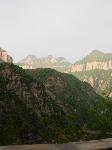
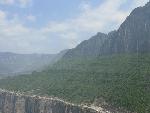
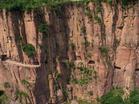
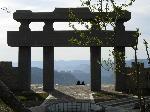
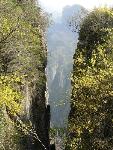
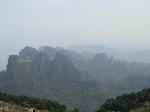
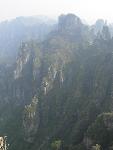
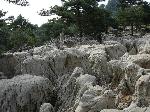

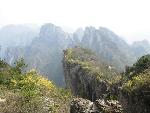
 Copyright © 1998-2026 All rights reserved.
Copyright © 1998-2026 All rights reserved.
1.
May 31, 2007 02:20 Reply
WINDENERGY said:
Stockov,
You've been on 2 of the most dangerous roads in the world....and lived to tell about it. Very Cool! So, what is your next adventure?